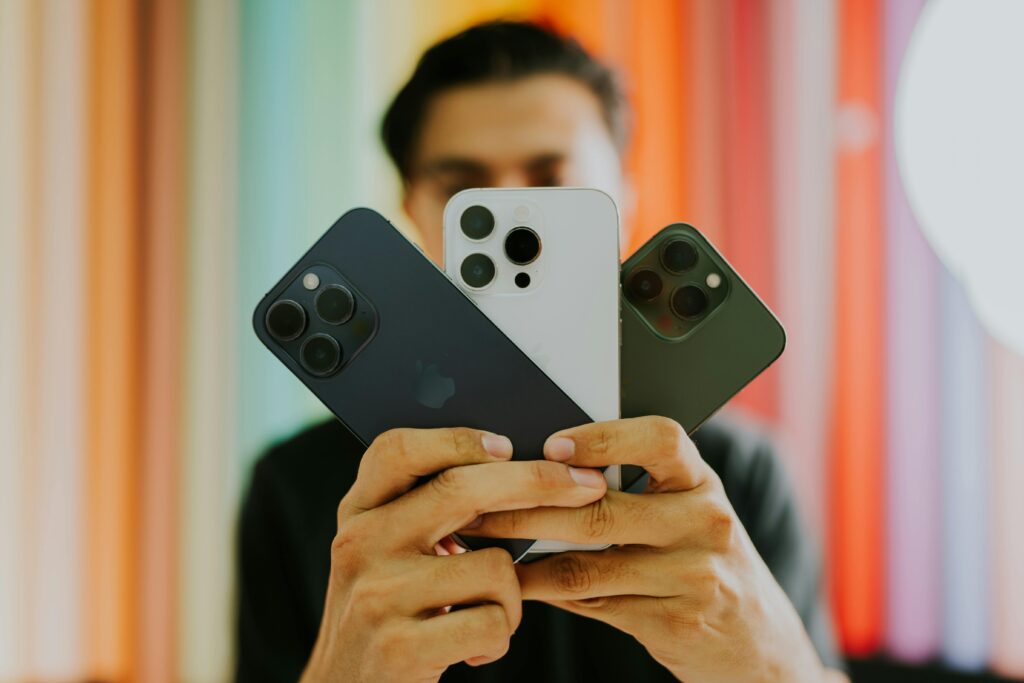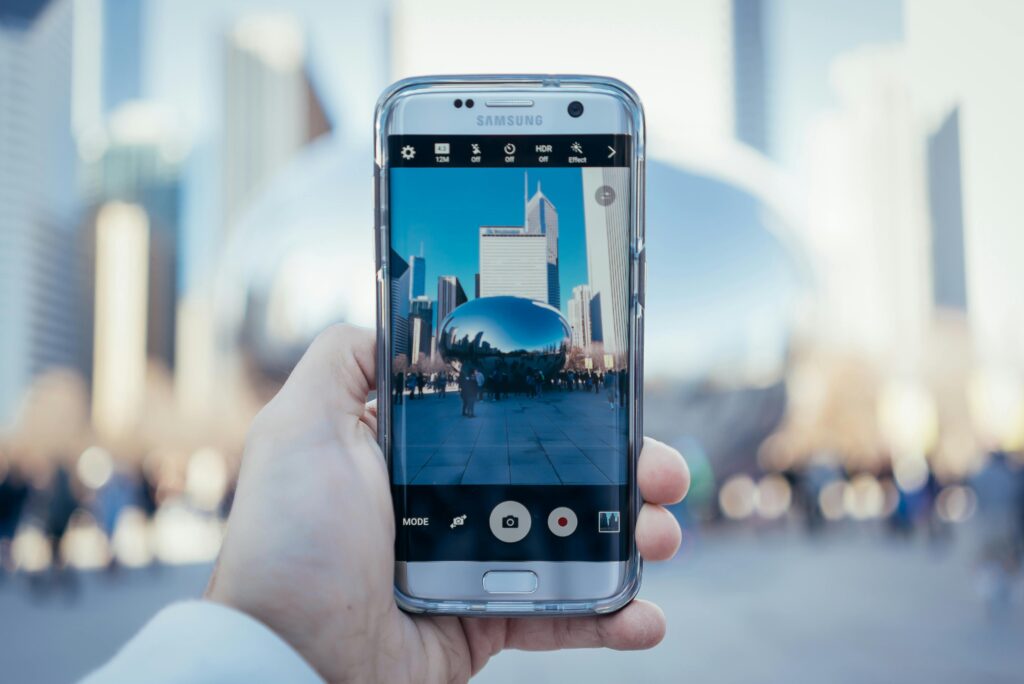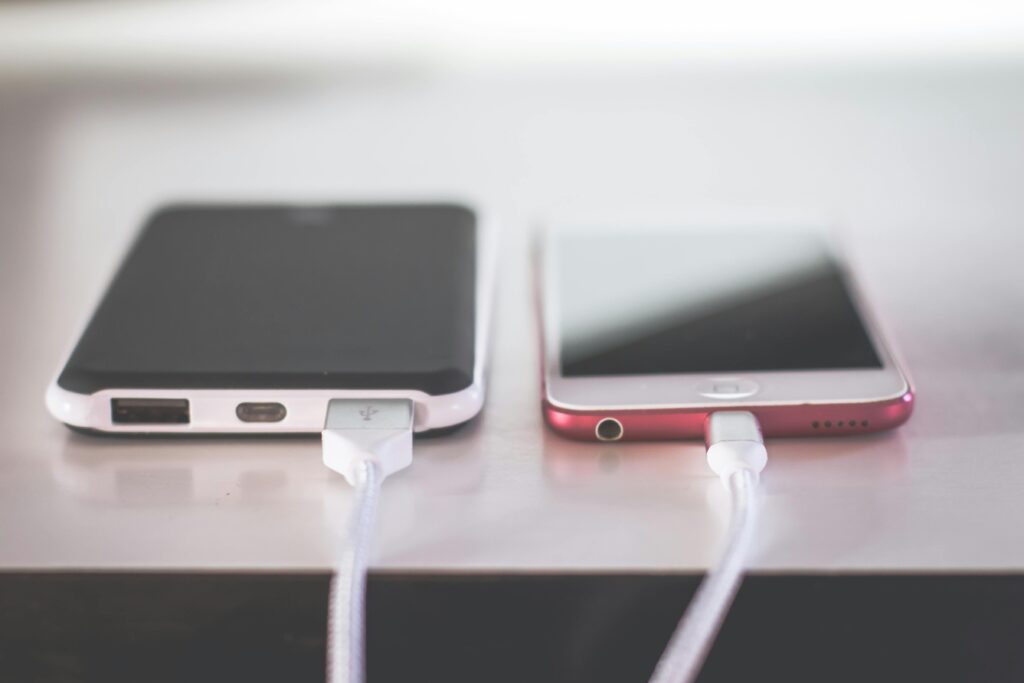Introduction to Android and iPhone

The smartphone market is predominantly divided between two leading operating systems: Android and iPhone. Android, developed by Google, made its debut in 2008 and has since evolved into a customizable and versatile platform, powering a multitude of devices from various manufacturers such as Samsung, LG, and OnePlus. This diversity allows users to choose from a wide range of hardware options, price points, and features, catering to different preferences and budgets. Android’s open-source nature also enables developers to create a rich ecosystem of applications, further enhancing the user experience.
On the other hand, the iPhone runs on Apple’s iOS, which has been in circulation since the introduction of the first iPhone in 2007. Apple has maintained strict control over both hardware and software, which has resulted in a seamless integration between the two. This approach provides a consistent and user-friendly experience, albeit within a more limited selection of devices compared to Android. iOS is often praised for its security, performance, and a robust app store stocked with high-quality applications. Moreover, Apple’s ecosystem, which includes products like the iPad, MacBook, and Apple Watch, offers users a synchronized experience across their devices.
The ongoing debate concerning which platform is superior—a nuanced topic—often hinges on user preference, individual needs, and specific use cases. Advocates of Android cite the versatility, customizable features, and broad range of devices as its primary advantages, while those in favor of iPhone highlight the consistent quality, security, and polished user experience as its key strengths. As we delve further into this comparison, understanding the historical context, key features, and market presence of both operating systems will provide valuable insights.
Design and Build Quality
When evaluating the design and build quality of Android and iPhone devices, it is essential to acknowledge the distinct philosophies that characterize each platform. iPhones, particularly models like the iPhone 14 and iPhone 14 Pro, showcase a premium aesthetic with their sleek glass fronts and backs, coupled with aluminum or stainless steel frames. This combination not only provides a visually appealing look but also contributes to overall durability. Apple consistently emphasizes attention to detail in their manufacturing processes, resulting in devices that feel solid and provide a premium hand feel. The design simplicity combined with rounded edges creates an elegant appearance that many users find appealing.
On the other hand, Android devices, such as the Samsung Galaxy S23 Ultra and Google Pixel 7, exhibit a diversified approach to design. With numerous manufacturers in the Android ecosystem, there is a wider range of styles available. High-end Android phones often incorporate glass and aluminum in their construction, similar to the iPhone; however, design variations are evident in this platform. For instance, the Galaxy line features a more angular design and often integrates curved screens, while Google leans towards a more utilitarian, understated aesthetic with flat glass surfaces and bold color choices.

Moreover, the size and weight of these devices can significantly influence user experience. The iPhone typically maintains a slightly more compact form factor but can weigh more due to its robust materials. Conversely, some Android phones may be bulkier but offer larger displays, catering to users who prioritize screen real estate for media consumption or productivity. In conclusion, both Android and iPhone devices present unique advantages in terms of design and build quality, appealing to different consumer preferences and styles.
User Interface and Experience
When examining the user interface (UI) and overall user experience (UX) of Android and iPhone, several distinct attributes emerge that cater to diverse user preferences. Android, known for its robust customization options, grants users the ability to tailor their devices extensively. Widgets, custom launchers, and a variety of themes allow for a personalized experience, enabling users to arrange their home screens according to their individual needs and aesthetic preferences. This level of modification appeals particularly to tech-savvy individuals who enjoy experimenting with their device’s appearance and functionality.
In contrast, iPhone’s user interface adheres to a more uniform and streamlined design-oriented approach. The iOS system emphasizes simplicity and intuitiveness, making it inherently user-friendly—especially for individuals who may not be as technologically inclined. The layout is consistent across the platform, allowing users to become familiar with navigation swiftly. Apple’s focus on design aesthetics further enhances the iPhone’s appeal, presenting a clean and elegant look that resonates with many users.
Navigation represents another crucial aspect when comparing the two platforms. Android devices often feature a back button, enhancing the navigational experience as users can seamlessly move between apps without confusion. Conversely, the iPhone employs a gesture-based system, where users swipe to access multitasking and return to the home screen. This gesture control is particularly effective for users who prefer a more minimalist approach to navigation, whereby no physical buttons are present.
Both platforms offer unique interface features that resonate with different user groups. For instance, Android users can employ features like split-screen multitasking, while iPhone users enjoy seamless integration across Apple devices, including iPads, Macs, and Apple Watches. Ultimately, the choice between Android and iPhone largely depends on the user’s preferences regarding customization, ease of use, and the overall experience desired from their mobile device.
Performance and Hardware
The performance of a mobile device largely depends on its hardware specifications, which include the processor, RAM, and storage capacity. In the realm of smartphones, both Android and iPhone devices have established themselves as leaders, each offering distinct advantages and trade-offs in performance. Apple’s iPhone, powered by its proprietary A-series chips, such as the A15 Bionic, showcases high performance thanks to its optimized architecture and efficient integration with the iOS ecosystem. The A15 chip features a six-core CPU and a four-core GPU, resulting in seamless multitasking and exceptional graphics performance. Combined with up to 6GB of RAM, iPhones demonstrate impressive speed and responsiveness in real-world applications.
On the other hand, Android devices come equipped with a variety of processors, the most notable being Qualcomm’s Snapdragon series and Samsung’s Exynos chips. The Snapdragon 888, for example, is widely regarded for its capabilities, featuring an octa-core CPU and an integrated Adreno GPU. The amount of RAM in flagship Android devices can vary, often ranging from 8GB to as much as 16GB, allowing for robust multitasking and enhanced performance for gaming and productivity applications. In terms of storage, Android devices commonly offer expandable storage options via microSD cards, while iPhones provide fixed internal storage ranging from 128GB to 1TB, allowing users to choose storage according to their needs.

Real-world performance benchmarks demonstrate that both platforms excel in specific scenarios. For instance, gaming enthusiasts often favor iPhones for their consistent frame rates and optimization in high-demand applications. Conversely, Android users benefit from extensive customization options and a wider range of device choices, enabling them to select models that suit their performance requirements. Ultimately, the choice between Android and iPhone in terms of performance and hardware often comes down to personal usage preferences and specific needs.
App Ecosystem and Software Updates
The app ecosystems of Android and iPhone present distinct advantages and disadvantages, ultimately shaping the user experience on both platforms. Android, powered by Google, boasts a vast array of apps available through the Google Play Store, offering diverse options catering to different user needs. Its open-source nature allows developers to create and distribute apps with relative ease, resulting in a greater quantity of applications. However, this openness can sometimes lead to variability in app quality, as not all developers adhere to stringent guidelines.
On the other hand, Apple’s App Store is known for its rigorous vetting process, which generally ensures a higher quality of applications available to users. While the selection may be lesser in quantity compared to Android, many users appreciate the focus on quality over quantity. Popular app developers often prioritize iOS releases, leading to the phenomenon of ‘app exclusivity’ where new applications launch on Apple devices first. Consequently, users in the iPhone ecosystem can enjoy innovative applications that incorporate cutting-edge functionalities.
When evaluating software updates, the policies of each platform further highlight their operational differences. Apple typically provides consistent software updates to all compatible devices at the same time, ensuring that users have immediate access to the latest features and security patches. This model contrasts with the Android ecosystem, where updates can vary by manufacturer and carrier. Although Google provides regular updates to its Pixel devices, third-party manufacturers may take longer to push updates due to their customization layers and the multitude of devices in circulation. As a result, Android users may encounter waiting periods for new features or security enhancements, while iPhone users can expect a uniform experience across devices.
Camera Capabilities
The camera capabilities of a smartphone have become a crucial factor for consumers when selecting between Android and iPhone devices. Both platforms offer impressive camera features, yet their approaches and results can vary significantly. Android smartphones, such as the Google Pixel series, are renowned for their exceptional image quality, particularly in computational photography. This technology utilizes advanced algorithms to optimize photos, creating stunning results even in challenging lighting conditions. The Pixel series adds features like Night Sight, which empowers users to capture vivid images in low light without excessive noise.
On the other hand, Apple’s iPhone has maintained a consistent edge in video recording quality. The iPhone 14 Pro, for instance, excels in this regard with its ProRes video recording feature, allowing users to capture cinematic quality video clips with ease. Furthermore, Apple’s software optimizations, including Smart HDR and Cinematic Mode, enable effortless transitions between focus points in videos, enhancing storytelling capabilities.
In terms of photo quality, both Android and iPhone devices utilize impressive hardware. Android devices often come equipped with multiple lenses, providing versatility for various photographic styles, including ultra-wide shots and telephoto capabilities. For example, Samsung’s Galaxy S23 Ultra features a comprehensive camera system, which showcases advanced zoom functionality and detailed close-up shots. Conversely, iPhones have a more controlled approach, focusing on lens quality and color accuracy to achieve true-to-life photo representation.
While both platforms offer solid camera capabilities, the choice may ultimately come down to personal preference. Users seeking superior photo editing features may lean towards Android devices, while those prioritizing video recording and a straightforward user interface may find iPhones more appealing. Ultimately, each platform presents unique strengths that cater to the diverse needs of photographers and videographers alike.
Battery Life and Charging Options
When it comes to battery life and charging options, both Android and iPhone devices have made significant advancements, aiming to cater to the varied needs of users. Battery longevity is a critical consideration for smartphone users; it dictates how long a device can function before requiring a charge. Android models, especially flagship devices from brands like Samsung and Google, often come equipped with larger batteries (often exceeding 4000 mAh), which enables them to provide longer usage times. For instance, the Samsung Galaxy S23 offers impressive battery life, often lasting a full day with moderate to heavy usage.
iPhones, while usually featuring batteries with lower mAh ratings compared to their Android counterparts, have optimized iOS for power efficiency. The iPhone 14 Pro, for instance, manages to extend its usage time effectively through software optimizations, providing nearly the same longevity as some Android flagships. This shows that battery performance is influenced not just by the hardware but also by how the operating system leverages that hardware.

Charging speeds are another area where both platforms are taking steps to improve. Android devices often support fast charging options, with many flagship models now reaching up to 65W, which can recharge a depleted battery significantly quicker than older models. In contrast, iPhones have traditionally lagged in this area, with the iPhone 14 Pro supporting 20W charging. However, Apple has been promoting its MagSafe technology, allowing for convenient wireless charging, which delivers up to 15W when used with compatible accessories. Wireless charging has become an essential feature for many users, offering greater ease of use and reducing wear on charging ports.
In evaluating battery life and charging capabilities, it is clear that both Android and iPhone devices offer robust options tailored to user needs, with trade-offs that vary between convenience, longevity, and charging speeds.
Price and Value for Money
The pricing strategies of Android and iPhone devices reflect the diverse needs of consumers, with each platform presenting distinct approaches to cost and value for money. Android devices are known for their variety, offering a wide range of options that cater to different budgets. For instance, brands like Samsung, Xiaomi, and OnePlus provide smartphones across various price ranges, starting from budget models around $100 to high-end flagship devices exceeding $1,200. This flexibility ensures that users can find Android devices that meet their financial constraints while still benefiting from decent performance and features.
On the other hand, Apple’s iPhone lineup typically occupies a higher price bracket. With entry-level models like the iPhone SE starting around $400, Apple’s offerings tend to increase significantly, with flagship models such as the iPhone 14 Pro Max approaching or surpassing $1,000. However, Apple advocates for a premium experience, emphasizing quality, longevity, and brand prestige as intrinsic aspects of the value proposition for iPhone consumers. This sentiment is reflected in the longevity of iPhones regarding software updates, which often extend support for several years, contributing to their overall value.
In examining the value for money, it is pertinent to assess not only the initial investment but also the lifetime of the device. Android smartphones can provide excellent value, especially in budget tiers, where consumers can access satisfactory performance for minimal expense. Conversely, while iPhones may require a heftier upfront payment, their strong resale value and long-term software support might justify the investment for many users. Ultimately, the decision between Android and iPhone hinges on individual needs and preferences, reflecting the importance of aligning price with perceived value.
Conclusion: Which One is Better?
Throughout this comparative analysis of Android and iPhone, various aspects have been highlighted to empower potential users in making an informed decision. Both platforms possess unique strengths and weaknesses, catering to different types of consumers and their specific needs.
Android devices, with their diverse range of offerings from multiple manufacturers, present consumers with a variety of choices in terms of price points, features, and customization options. This flexibility can be particularly appealing for tech-savvy users who appreciate the ability to modify their devices according to personal specifications. Furthermore, the Android operating system supports a wider array of applications, making it a versatile option for those seeking specific functionalities.
On the other hand, iPhones are distinguished by their seamless integration of hardware and software, providing a user-friendly experience that many appreciate. Apple’s focus on security and privacy is unrivaled, offering peace of mind for users concerned with digital safety. The iOS ecosystem also delivers consistent updates and a robust set of apps, ensuring that users benefit from the latest features and improvements without having to navigate through various manufacturer modifications.
Ultimately, the question of which is better is subjective and highly dependent on personal preferences and lifestyle needs. Individuals who prioritize customization or seek budget-friendly options may find Android to be a more suitable choice. Conversely, those who value a cohesive environment, strong security, and effortless usability may gravitate toward iPhones. Evaluating one’s specific use cases, such as gaming, productivity, or multimedia capabilities, will aid in determining the best fit.
In conclusion, both Android and iPhone have their distinct advantages, and the optimal choice hinges on personal requirements and how individuals interact with their devices on a daily basis.



